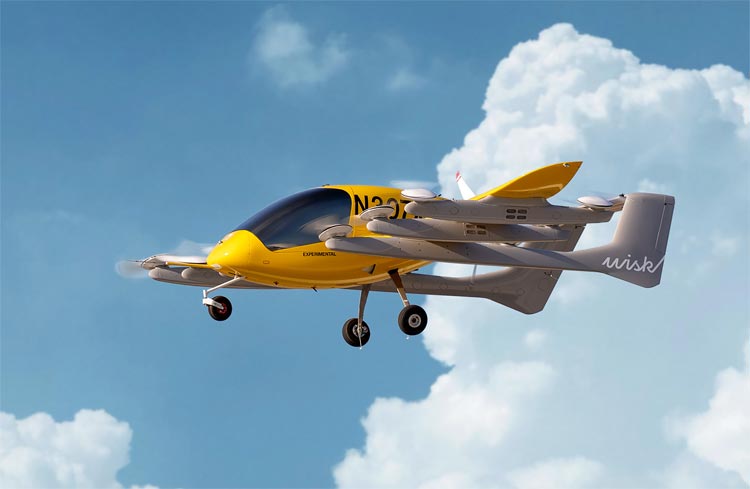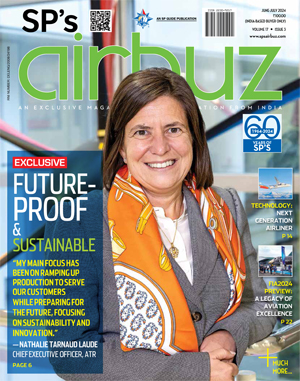Boeing Upbeat on Sales in India
The aircraft manufacturer expects Indian airlines to boost their capacity quickly in this world's fastest growing major market
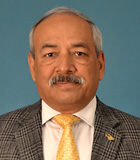 |
The Author has served as Assistant Chief of Air Staff Offensive Operations and Assistant Chief of Integrated Defence Staff Tech Intelligence. Held appointments related to offensive operations at Air HQ and ISR matters at HQ IDS. |
Boeing during the latest media presentation on September 01, 2022 gave their estimate that India's domestic airlines will lead air traffic growth right upto 2040, with a Compound Annual Growth Rate (CAGR) of 6.9 per cent as compared to South East Asia 5.5 per cent, China and Africa 5.4 percent and Latin America 4.8 per cent.
INDIA'S AVIATION MARKET
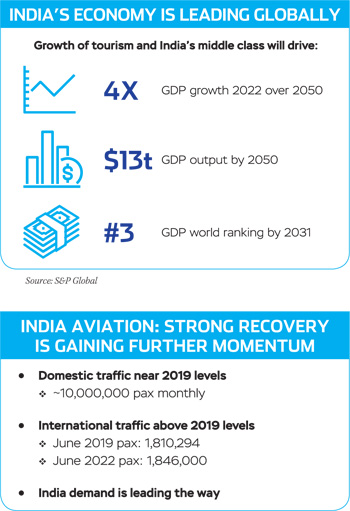
"India, in this region, is going to be the fastest-growing (aviation) market over forecast period of 20 years," said Boeing India President Salil Gupte. He added that the growth of India's aviation sector offers a "tremendous opportunity" for all the stakeholders involved.
"Some of this growth is more than 7 percent and then as the market matures, it is slower, but the average is nearly 7 percent over time which creates a tremendous opportunity for all of us involved in Indian aviation to support that growth," he further said.
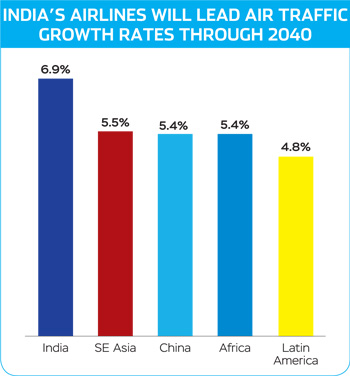
Overall Boeing mentioned that they expect Indian airlines to boost their capacity quickly in the world's fastest growing major market. Boeing was buoyed by the fact that after being severely hit by the pandemic, the Indian aviation sector is on the recovery path. It mentioned that domestic traffic is very much near 2019 levels, averaging close to 10,000,000 passengers monthly. Also, the international traffic too is above 2019 levels, viz. in June 2022 1,846,000 passengers travelled internationally against the June 2019 figure of 1,810,294 passengers. Thus, Indian aviation sector demand is leading the way.
Dave Schulte, the Managing Director for Regional Marketing at Boeing Commercial Airplanes, said, "We are forecasting Indian airlines to rebound quickly and add 25 per cent plus annual seats back into the market."
Presently, Low cost carrier (LCC), SpiceJet is Boeing's biggest customer in India. It has a line up of a total of 58 Boeing aircraft of different types. The airline has plans to expand its operations and looking to to add more Boeing's 737 MAX jets to its fleet. Boeing also has an order of 72 Boeing 737 MAX aircraft from Akasa Air. Thus, Boeing considers SpiceJet, Akasa Air and Air India group as its likely customers for more aircraft in immediate future.
During the presentation, Boeing highlighted many challenges that Indian airlines face including high fuel price, low air fares for smaller distances and a marked devaluation of currency vis-s-vis' the US Dollar in the past six months. In view of these challenges, Boeing suggested that 737MAX is a perfect choice for airlines in India, as it reduces fuel burn and emissions by 21 per cent as compared to previous generation aircraft.
Boeing highlighted many challenges that Indian airlines face including high fuel price, low air fares for smaller distances and a marked devaluation of currency vis-s-vis' the US Dollar
EXTENSIVE RANGE OF PRODUCTS
Boeing also highlighted specific utilities of various types of aircraft in its inventory. It recommended Boeing 737-7 as ideal for high altitude and hot area operations and would offer enhanced opportunities in new markets being generated by Regional Connectivity Scheme (RCS) under 'Udey Desh ka Aam Nagrik' (UDAN) scheme due to its right seating capacity of 172 passengers; Boeing 737-8 with 200 seats as the most versatile, as it offers more flexibility for aircraft operations; Boeing 737-9 with 220 seats for the most profitable growth is most suited for growing markets is ideal for more profits; and Boeing 737-10 with 230 sets, as the most profitable aircraft due to its lowest unit costs and highest capacity.
Boeing brought out that the company takes pride in constant innovation and improvements that have been achieved over a period of time
Boeing brought out that the company takes pride in constant innovation and improvements that have been achieved over a period of time. Notably amongst them being the LEAP-1B engine, various flight deck enhancements reducing the crew workload, winglet modifications and on-board network systems, besides various other features.
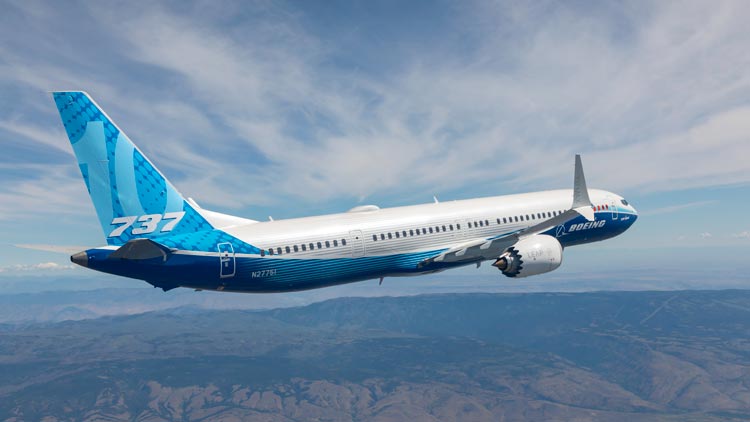
LEAP engines are designed to meet the challenge of de-carbonising air transport. The LEAP-1B engine offers Boeing 737 MAX operators enhanced performance in terms of fuel consumption CO2 emissions (15 per cent lower), NOx emissions (up to 50 per cent lower and overall noise reduction.
In the bigger aircraft category, Boeing offered the 250 seater Boeing 787-8 for Chennai-Tokyo type traffic; 315 seater Boeing 787-9 for Delhi-Seattle type traffic; and 375 seater for heavy traffic airports for a typical Mumbai-London type flight.
Boeing offered 777 family aircraft as unmatched network growth options. It claims to be the most popular aircraft, with its seating capacity upward of 400, since 2013 it claims to have sold more than four times the rival Airbus A 331. It is accompanied with the all new GE9X engine, new composite wing with 72 metre span, natural laminar airflow nacelle, a new flight deck friendly for the pilots and folding wing tip for Code E compatibility with ICAO standards.
New Aircraft Developments
In order to reach net zero carbon emission by 2020, Boeing has invested $450 million to advance the progress of a certified autonomous Electric Flight aircraft
Boeing team also covered the development on 'Wisk' aircraft. As part of Boeing's effort towards sustainable future, in order to reach net zero carbon emission by 2020, Boeing has invested $450 million to advance the progress of a certified autonomous Electric Flight aircraft. Wisk is an Urban Air Mobility (UAM) company behind the world's first all-electric, self-flying air taxi. Wisk's mission is to deliver safe, everyday flight for everyone. It has achieved flight up to 1,500 feet AGL at 100 miles per hour up to a range of 25 miles. Still lots to catch up, but the effort and progress achieved over 1600 test flights with nil accidents is praiseworthy.
